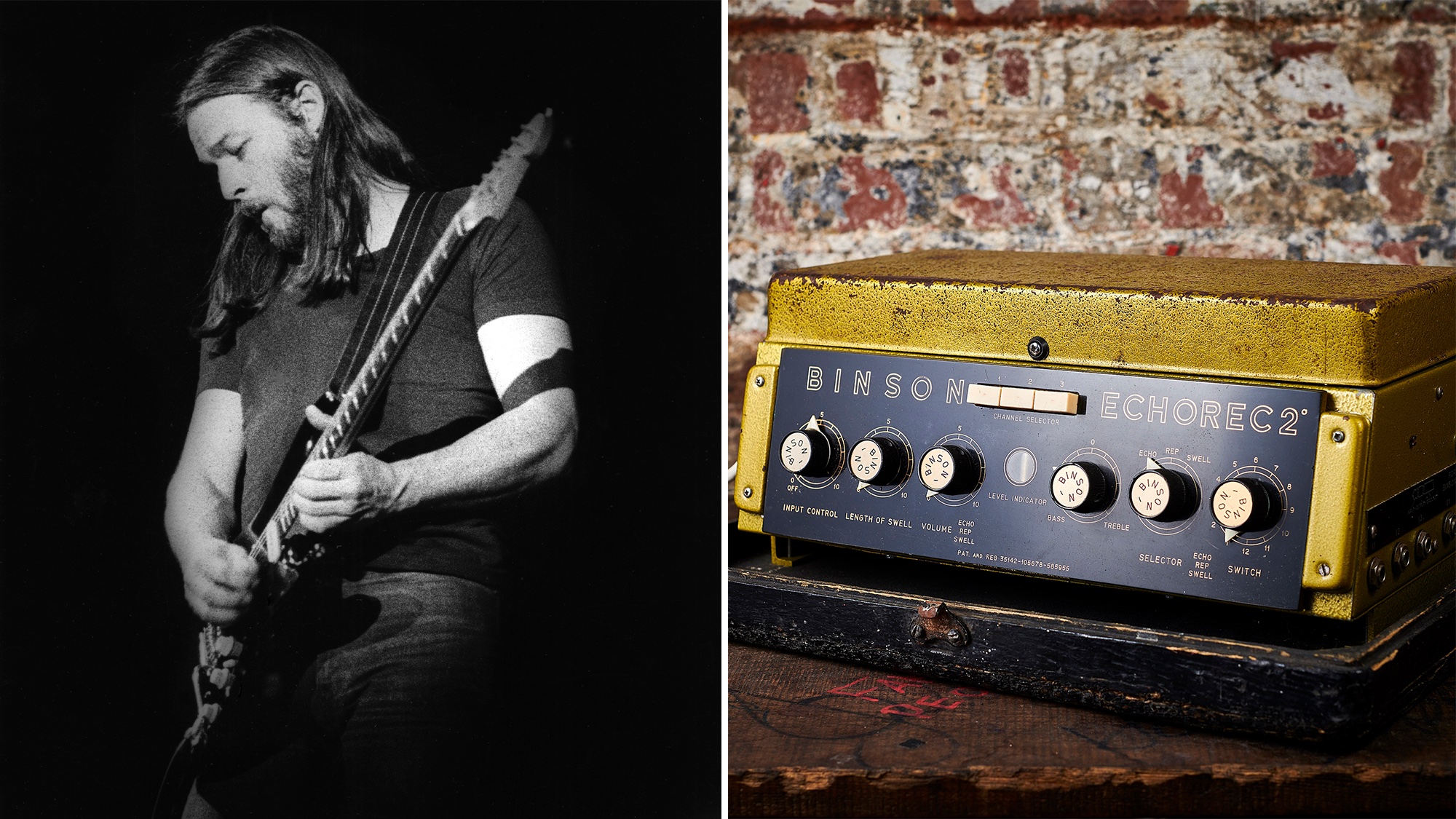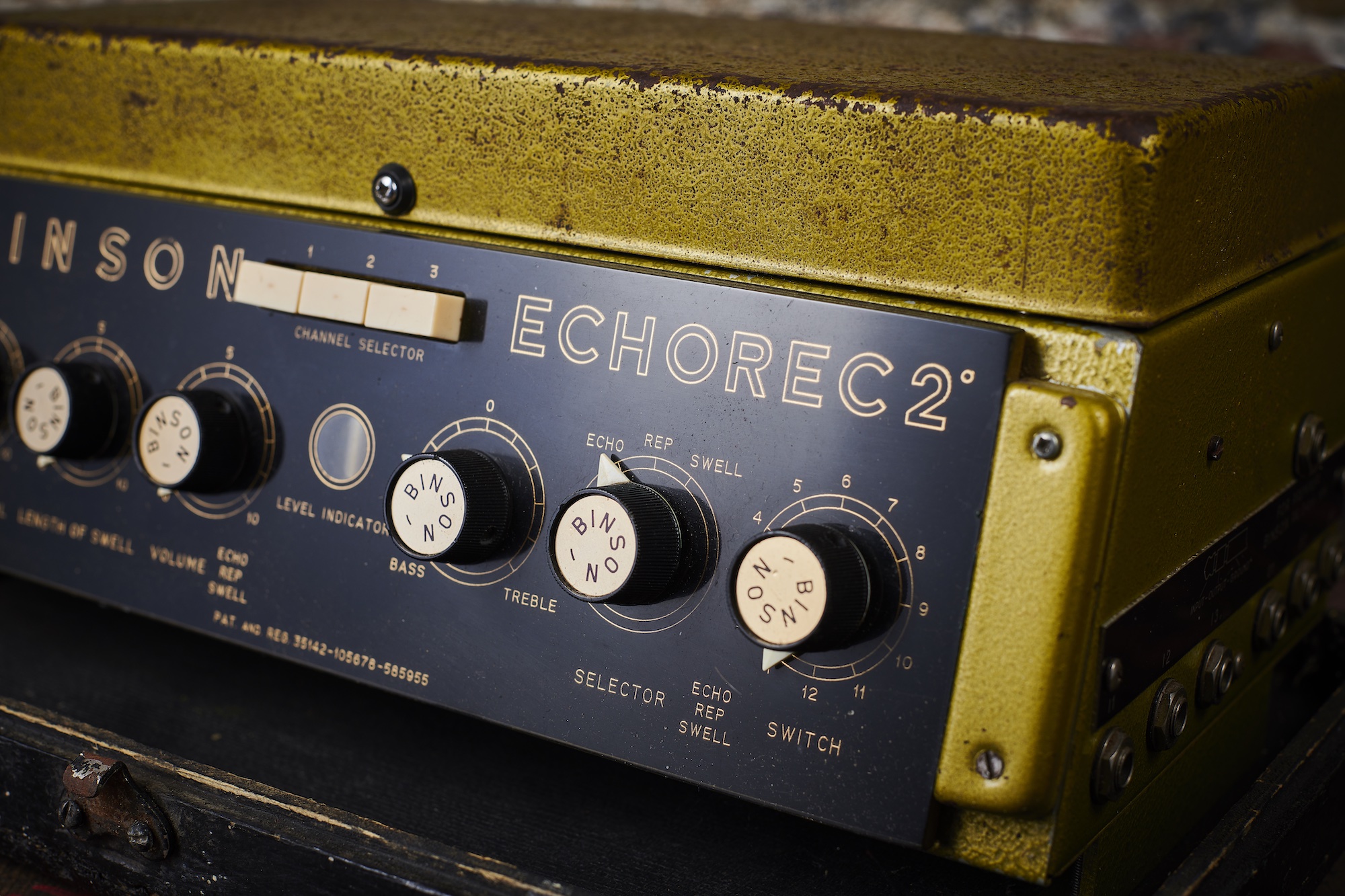“It's more than an effect. It's an instrument in itself”: Made famous by David Gilmour, and employed by Rory Gallagher and the Beatles, the Binson Echorec is a secret-recipe tool that helped define rock guitar tone
If you have even the most passing familiarity with Pink Floyd, you've heard an ethereal soundscape generated by the Binson Echorec. This is what it is, the unit's fascinating inner workings, and why it still matters

It really doesn’t matter what genre of music you prefer to play, if you’re reading this you probably own a delay pedal, if not several of them.
Of course, there are always exceptions – some players swear by only reverb and some might not even dial in any ambience whatsoever. But for the most part, delay pedals sit among the most valuable of tools out there for guitarists.
Which is also why there are so many different types of delay: from analog and bucket-brigade to digital, ping-pong, reverse, and tape. Each of these will have a defining quality to its repeats, even if the functionality and concept is by and large the same.
One type of delay that’s rich in musical history, though arguably lesser-known compared to the usual suspects, is the Echorec drum echo, launched by Italian company Binson in the mid-50s. It was designed to be a portable replacement for the plate reverbs and echo chambers typically found in larger recording studios, using an analog magnetic drum recorder instead of a tape loop.
One of the first famous users was Hank Marvin from English rock and roll originals The Shadows. It then ended up in the hands of The Beatles, Led Zeppelin, and The Who – though there's one guitar player who is more entwined with Echorec history than anyone else, Pink Floyd legend David Gilmour.
The Echorec’s distinct effect and tube-powered preamp can be heard on classic tracks like Shine On You Crazy Diamond, Time, and Echoes, as well as early cuts like Set The Controls For The Heart of the Sun, A Saucerful of Secrets, and Careful With That Axe, Eugene.
That helps explain why it’s a sound that’s still being used all these years later. It’s rooted in nostalgia and history, with a tonal characteristic that sets it apart from other types of delay.
All the latest guitar news, interviews, lessons, reviews, deals and more, direct to your inbox!
There are a fair few companies recreating this famous effect in pedal form, but if there’s one Echorec-style delay to rule them all right now, it’s the Boonar by Croatian audio experts Dawner Prince.
With players like John Mayer, Steve Lukather, Chris Buck, and Richard Fortus – as well as, yes, even David Gilmour himself – often spotted using the pedal, we thought we’d rope in Dawner Prince CEO Zoran Kraljevic to help explain some of the intricacies behind the design.
“The main difference between a drum and tape echo lies in how the delay effect is generated,” reveals Kraljevic.
“A tape echo records and repeats the signal onto magnetic tape in a loop. The distance between the record and playback heads, along with the tape speed, determines the delay time. The sound is warm, with gentle modulation and gradual degradation over time.
“Drum echo, on the other hand, uses a rotating magnetic drum instead. The signal is recorded magnetically onto the surface of the drum, which contains a number of playback heads mounted around it. The drum system is more reliable than tape, and the metallic ‘memory’ medium provides a cleaner, hi-fi-quality sound.”

This innovation from an engineering perspective helped cement the Echorec’s status as one of the first delay units to definitively define the sound of an era.
In that sense, it was more than an effect, because players like David Gilmour and Hank Marvin were using it to sculpt entire soundscapes and create layers of space and emotion, rather than just adding a few simple repeats here and there.
As for the resurgence in popularity among today’s players, Kraljevic believes the appeal lies with those looking for something more “alive” than pristine digital delays, with an unmistakable “bubbling echo swell”.
The Echorec is an instrument in itself. Its echo is complex and multidimensional – something in between an echo and a reverb
Dawner Prince CEO Zoran Kraljevic
It’s particularly popular among musicians working within more abstract realms, from psychedelic and stoner to post and prog rock players – guitarists looking for a certain kind of tonal coloration, rhythmic atmosphere, and increased dimension.
Designing the Boonar, however, was no mean feat, explains Kraljevic. This was mainly because of the rarity of original units and the costs involved with sourcing one. As fate would have it, he designed the first Boonar without even having spent time with a real Echorec.
“All I had were a pair of decent PC speakers, my ears, and a few good YouTube demos which I listened to countless times,” he confesses, later admitting he eventually did manage to A/B his design against an original and was very impressed with the results.
Another challenge was capturing all the characteristics that defined the sound and finding a way to faithfully reproduce them with DSP technology.
“The Echorec is an instrument in itself,” he notes. “Its echo is complex and multidimensional – something in between an echo and a reverb. It swells and grows rather than simply decaying.
“It’s not just a regular delay that repeats the input signal; it has movement, depth, and a musical texture that responds to how you play. There are so many tiny details that make up the bigger picture.”
Naturally, seeing his product end up in the hands of many guitar legends has been a source of great personal pride for the Dawner Prince owner. But getting the seal of approval from David Gilmour himself was, in many ways, one of the greatest achievements of his life and career to date.
“That was a turning point for both me and my company,” Kraljevic admits. “It came as confirmation that I’d created something authentic, placing our one-room workshop onto the world map of pedal manufacturers.
“I got a call from David’s longtime technician, Phil Taylor, who told me that David really liked the pedal and planned to use it, but there were a few small things that could be improved. I tweaked the design and released a firmware update that incorporated those final adjustments.”
The Pink Floyd mastermind was also involved in the testing phase of the higher-end Boonar Tube Deluxe, released in 2024. It features vacuum tubes, full MIDI control, and studio-grade outputs.
“It was my homage to the Binson Echorec 2 T7E,” Kraljevic explains. “Phil suggested some practical features like the ability to store/recall presets and a screen for the delay time, which David considered to be important.
“I was lucky to have the world’s greatest Echorec expert involved in the final testing phase. It was a real pleasure working with him. I feel privileged and proud to see the Boonar Tube Deluxe in both his studio and tour racks.”
Amit has been writing for titles like Total Guitar, MusicRadar and Guitar World for over a decade and counts Richie Kotzen, Guthrie Govan and Jeff Beck among his primary influences as a guitar player. He's worked for magazines like Kerrang!, Metal Hammer, Classic Rock, Prog, Record Collector, Planet Rock, Rhythm and Bass Player, as well as newspapers like Metro and The Independent, interviewing everyone from Ozzy Osbourne and Lemmy to Slash and Jimmy Page, and once even traded solos with a member of Slayer on a track released internationally. As a session guitarist, he's played alongside members of Judas Priest and Uriah Heep in London ensemble Metalworks, as well as handled lead guitars for legends like Glen Matlock (Sex Pistols, The Faces) and Stu Hamm (Steve Vai, Joe Satriani, G3).
You must confirm your public display name before commenting
Please logout and then login again, you will then be prompted to enter your display name.




